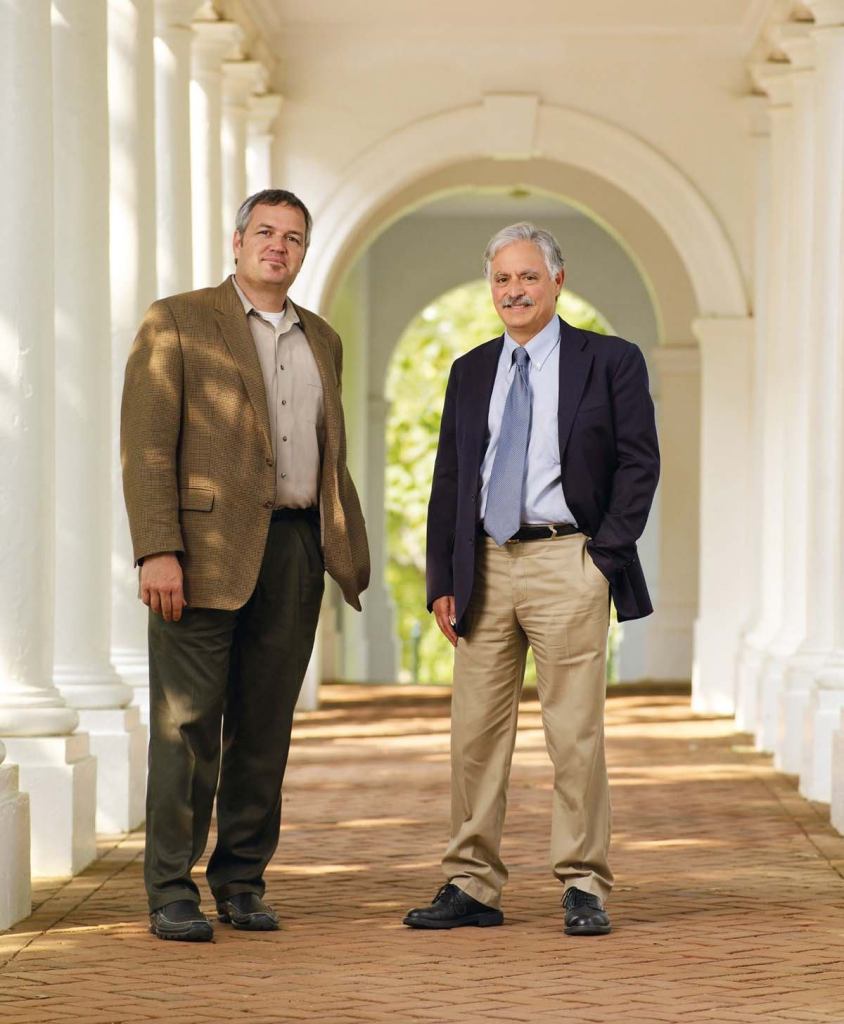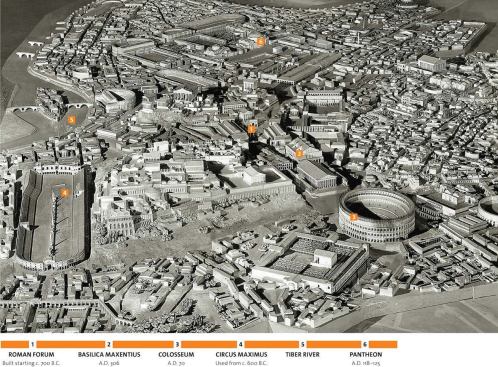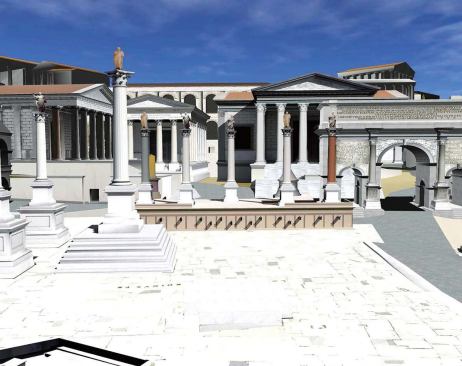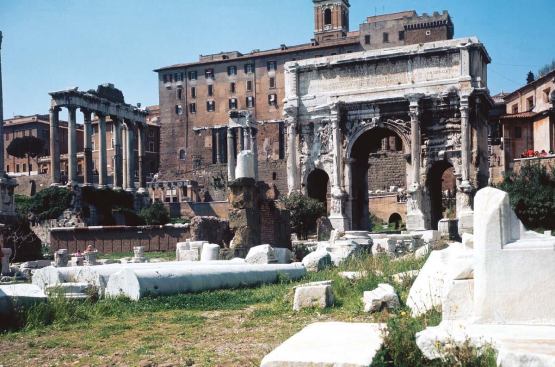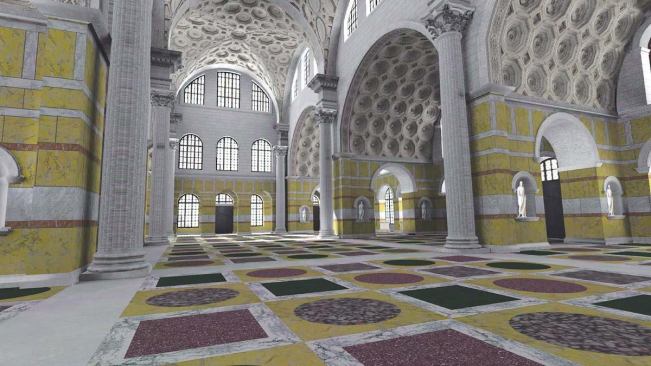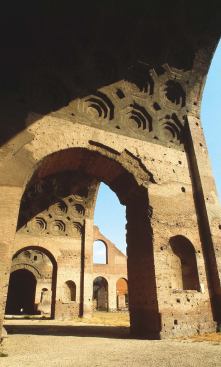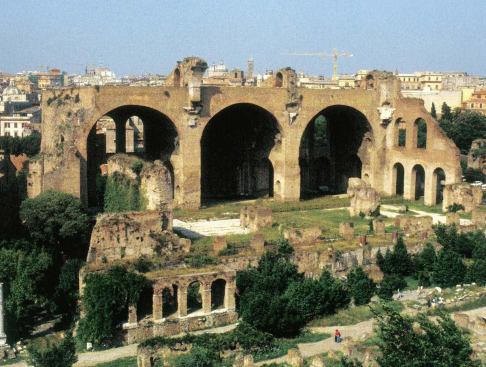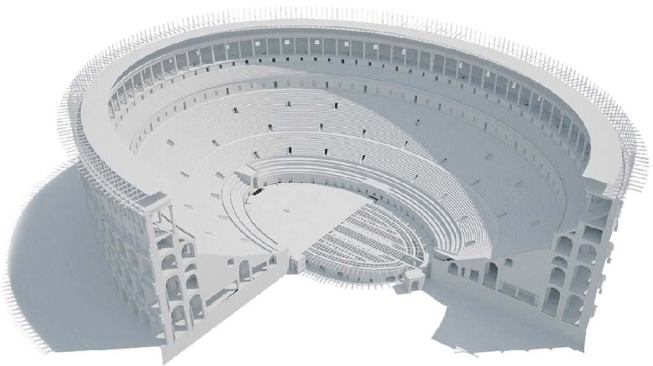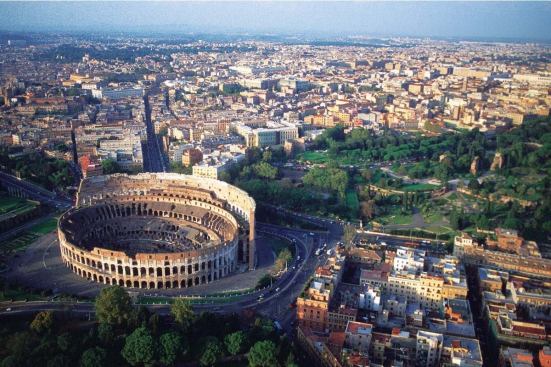Corbis
Built at a scale of 1:250 and measuring more than 250 square fee…
CD-Rome: Technology that inspired the model
From the 1970s onward, Bernard Frischer experimented with different technologies in his quest to simulate the ancient city of Rome. While a fellow at the American Academy in Rome in 1975, Frischer met urban designer Donald Appleyard of the University of California, Berkeley. Appleyard had developed a system of video editing that presented models of new architectural projects within the context of the surrounding neighborhood and city. Appleyard died in 1982, but his work gave Frischer the idea to translate the plaster-of-paris model of ancient Rome into video form.
From 1978 to 1980, a research team from the Massachusetts Institute of Technology created the Aspen Movie Map, a navigable, touchscreen tour of Aspen, Colo., that was a breakthrough in interactive media. The team mounted four 16mm film cameras on top of a car and drove down the center of every street in Aspen, capturing front, back, and side views. The scenes were transferred to laserdisc and linked to a street plan of Aspen. “My idea was to use the same approach, with miniature cameras going up and down the streets of the [Rome] model,” says Frischer. So he did some test shots of the plaster model to see if it would support a close-up view. It didn’t. “Eighty percent of the surfaces of buildings in that model have no detail at all,” Frischer says. “So the idea of a videodisc didn’t fly. But the vision of simulating ancient Rome stuck with me.”
The advent of 3-D modeling software proved more auspicious. The buildings and terrain that constitute the urban fabric in Rome Reborn 1.0, based on a laser scan of the Plastico, were modeled with Maya software, textured with Google SketchUp, and then imported into MultiGen Creator. Finally, says Kim Dylla, a systems operator who works with Frischer, the Creator model of the whole city was converted to an OpenSceneGraph binary format for real-time viewing.
—Amanda Kolson Hurley
